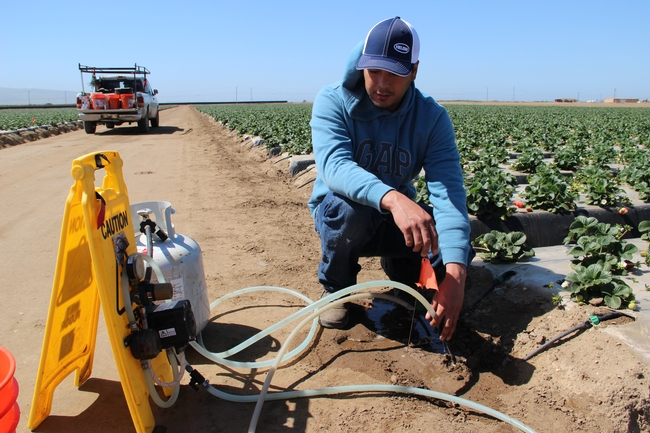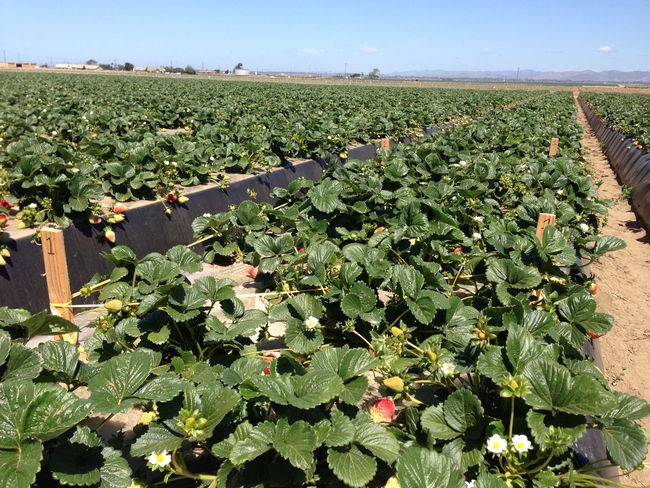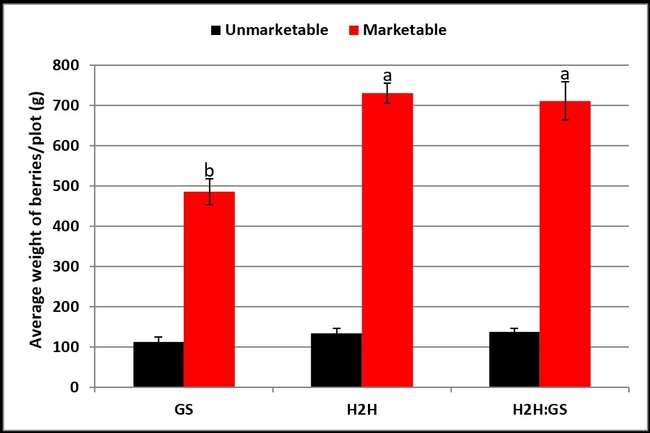Synthetic or chemical or inorganic fertilizers are commonly used in many conventional crop production systems providing essential nutrients necessary for optimal plant growth and yields. While these fertilizers provide plants with readily available nutrients, excessive application could lead to leaching into the ground water or increase the attractiveness of plants to pests and diseases. Organic fertilizers, on the other hand, are generally made from plant or animal sources. Compared to synthetic fertilizers where nutrients are readily available, nutrients are slowly released from organic fertilizers and thus have a lower risk of nutrient leaching. Organic fertilizers add organic matter to the soil, which improves soil structure, water holding capacity, and root growth. Organic matter also supports beneficial microbial communities in the soil that improve nutrient availability to the plant and protect plants from plant pathogens and other stress factors.
Organic fertilizers, especially those made from food waste, have a significant environmental benefit by recycling valuable nutrient and energy resources that would have, otherwise, been wasted (Senesi, 1989). Several studies emphasized the importance of soil organic matter and its positive impact on soil fertility, crop productivity, and environmental sustainability (Tisdall and Oades, 1982; Baldock and Nelson, 2000; Johnston et al., 2009). However, a balanced used of both synthetic and organic fertilizers is a good strategy both to meet plant needs and environmental sustainability (Chen, 2006).
In the United States, food waste at consumer and retail levels was estimated to be about 30% of the food supply, which is equal to 133 billion pounds valued at $161 billion (USDA-ERS, 2016). Food waste is the largest part what goes into landfills and is the third largest source of methane in the United States. Converting food waste into a fertilizer will have a major impact on agriculture and environment.
To evaluate the efficacy of a recycled food waste-based liquid compost on strawberry yield, a study was conducted during the spring of 2013 on a conventional strawberry field at DB Specialty Farms, Santa Maria.
Materials and Methods
Harvest-to-Harvest (H2H), made by hydrolysis of freshly expired produce, meat, and other food items collected from grocery stores, was evaluated alone and in combination with the grower standard. The formulation of H2H used in the study had NPK at 1-1-0, 5-7% of amino acids, 6-8% of lipids, 8-10% carbohydrates, and 20-25% organic matter according to the label. Treatments included i) Grower standard or GS (proprietary fertilizer regimen), ii) H2H at 73 gallons/acre, and iii) H2H:GS at 50:50. H2H was administered through the drip irrigation system 28 March, 9 and 18 April. Each treatment had a block of about 1.6 acre that were adjacent to each other. On six randomly selected beds within each block, a 40-plant section was marked as a sampling plot. Yield data were collected from these plots from 4 April to 20 May on 10 sampling dates following grower's harvest schedule.
Data were analyzed using analysis of variance and significant means were separated using Tukey's HSD test.
AndresTapia administering treatments through a special pump built by JoeCoelho (above) and observation plots (below).
Results and Discussion
Compared to the yield in GS plots, marketable strawberry yield was significantly higher (P < 0.05) for H2H treatment on four of the harvest dates and for GS:H2H combination on two of the harvest dates (Table 1). The average marketable berry yield was significantly higher (P = 0.0003) in both H2H and GS:H2H treatments compared to the GS treatment (Fig. 1). There was no difference (P = 0.283) in the weight of unmarketable berries and their proportion of the total yield was 18.7, 15.5, and 16.2 for GS, H2H, and GS:H2H, respectively.
Table 1. Marketable berry yield on different harvest dates. Means followed by the same letter within the same column are not statistically different based on Tukey's HSD test.
Fig. 1. Average marketable and unmarketable yield during the observation period.
This first commercial field study using H2H shows promising results in improving strawberry yield with recycled food waste. Manufacturer made changes to the H2H formulation and recommendation rates after the study was conducted. Additional studies in different fields with different application rates from the beginning of the production season are essential to make valid conclusions. Soil conditions and nutrient management practices vary among various fields and additional studies will add value to the results obtained in this preliminary study.
Acknowledgements: Thanks to Daren Gee for the collaboration, California Safe Soils for financial support, and Joe Coelho and Andres Tapia for their technical assistance.
http://ucanr.edu/articlefeedback
References
Baldock, J. A. and P. N. Nelson. 2000. Soil organic matter. In: Sumner, M. E. (Ed.) Handbook of Soil Science. CRC Press, Boca Raton, FL, USA, pp. B25-B84.
Chen, J.-H. 2006. The combined use of chemical and organic fertilizers and/or biofertilizer for crop growth and soil fertility. International workshop on sustained management of the soil-rhizosphere system for efficient crop production and fertilizer use. Vol. 16. p. 20. Land Development Department Bangkok, Thailand.
Johnston, A. E., P. R. Poulton, and K. Coleman. 2009. Soil organic matter: its importance in agriculture and carbon dioxide fluxes. Adv. Agronomy 101: 1-57.
Senesi, N. 1989. Composted materials as organic fertilizers. Science of the Total Environment 81: 521-542.
Tisdall, J. M. and J. M. Oades. 1982. Organic matter and water-stable aggregates in soils. European J. Soil Sci. 33: 141-163.
United States Department of Agriculture Economic Research Service (USDA-ERS). 2016. US Food Waste Challenge FAQ's. Accessed on 9 December, 2016 from http://www.usda.gov/oce/foodwaste/faqs.htm




